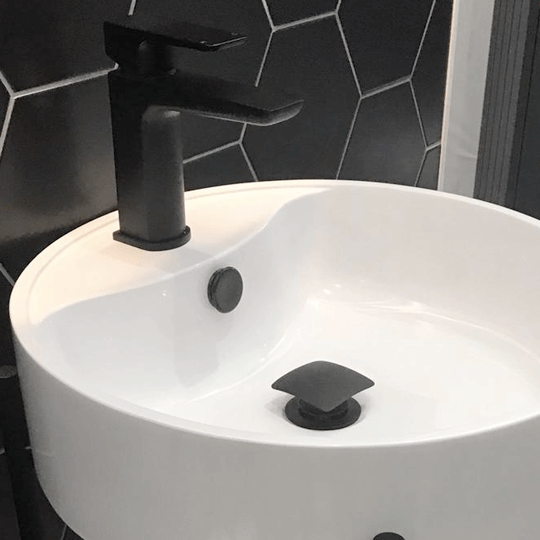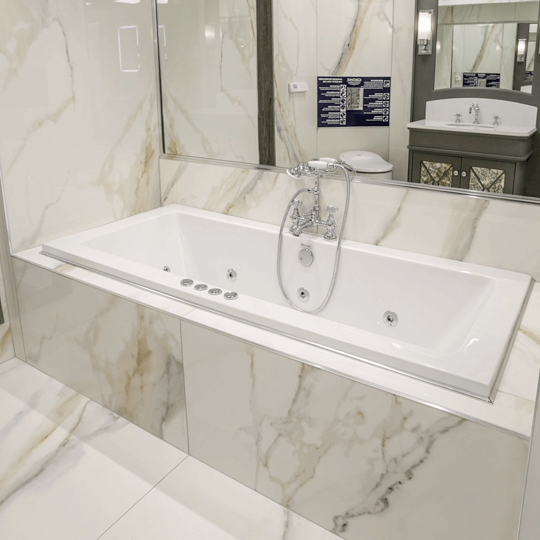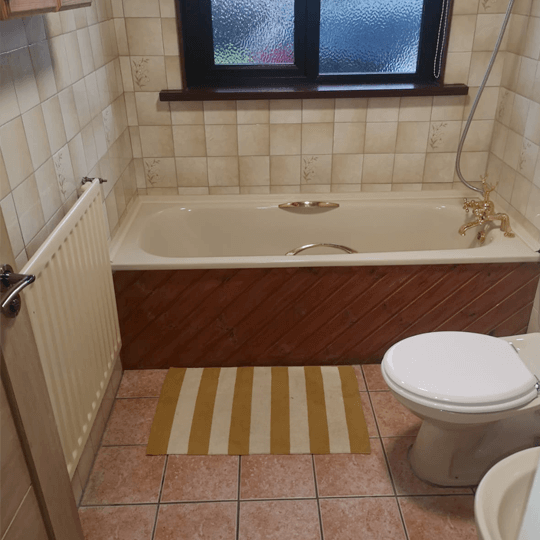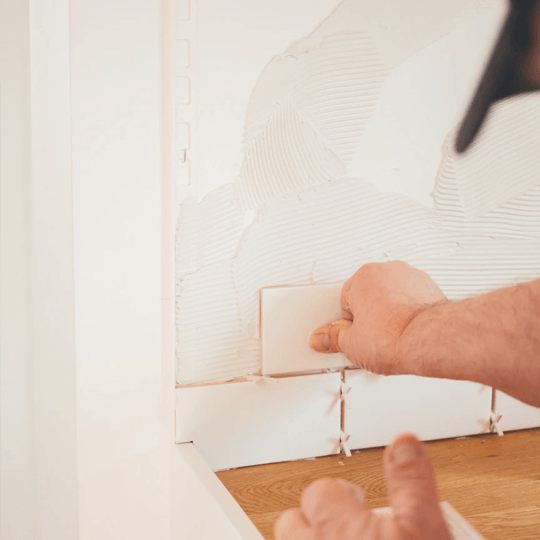How to cut tiles
If you’re redesigning your kitchen or bathroom, or are installing one for the first time, then chances are you’ll be fitting tiles. In that case, it’s very likely you’ll need to cut a number of these – for example, to fit them around a basin, bath, or kitchen cabinetry.
It’s always best if you hire a professional to cut and fit your tiles, as they have the tools and the experience to do the job efficiently, but if you’re taking it on yourself – or are simply interested in the process of tile cutting – then we have a guide on what’s involved below.
Recommended safety equipment:
- Goggles
- Gloves
- Kneepads
- Earplugs
Tools required:
- Paper and pen (optional).
- Steel ruler.
- Tile markers – for marking on the tiles where to cut.
- Tile scribe – makes clean, straight cuts through thinner tiles. This is the most basic type of tile cutter.
- Tile cutter – for cutting the tiles to the correct shape and size. (You may use a flatbed tile cutter, a hacksaw, or an electric tile cutter – which will depend on the type of tiles being cut).
- Tile file and/or sandpaper.
- Cloth to wipe dust from cut tiles.
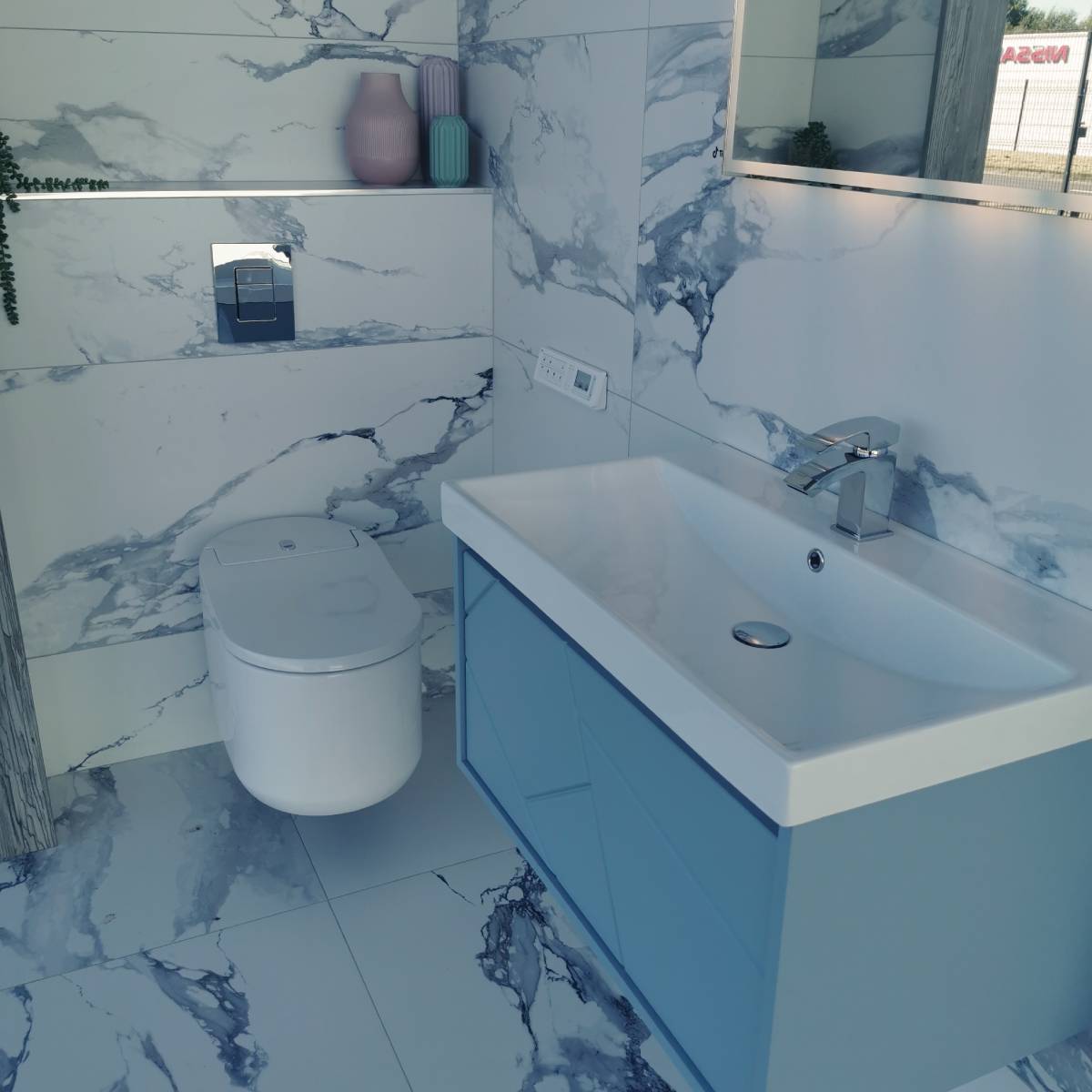
Always make sure you’ve got the right equipment before cutting tiles.
NB The type of tiles you’re cutting will determine the exact tools required, with more delicate (and thicker) tiles such as porcelain, for example, needing specialist equipment. For bathrooms and kitchens, which may need tiling around curved toilets and sinks, an electric cutter such as the diamond blade wet-saw tile cutter would be more appropriate.
Steps for cutting tiles
- Firstly, mark out on the tile where you need to cut, using a tile marker. You will need to remember to leave room for the grout and movement joints.
NB You might want to check the size of the tile by using paper to mark out the measurements first. By placing a sheet of paper around the base of a pedestal basin or toilet, for example, you can mark out the dimensions on the paper before placing this onto a tile to determine where to cut.
- Place the tile in the tile cutter and press down on the handle. Don’t push too hard, as excessive force may cause the tile to shatter. It’s best to remove smaller pieces of tile at a time, as you work towards the edge. Alternatively, you might be using a hacksaw, depending on the type of tile being cut so, again, use this carefully during the cutting process.
- Use the tile file or sandpaper to smooth down the edges of the cut tile, which is now ready to fit. You can wipe the tile with a cloth to remove any dust.
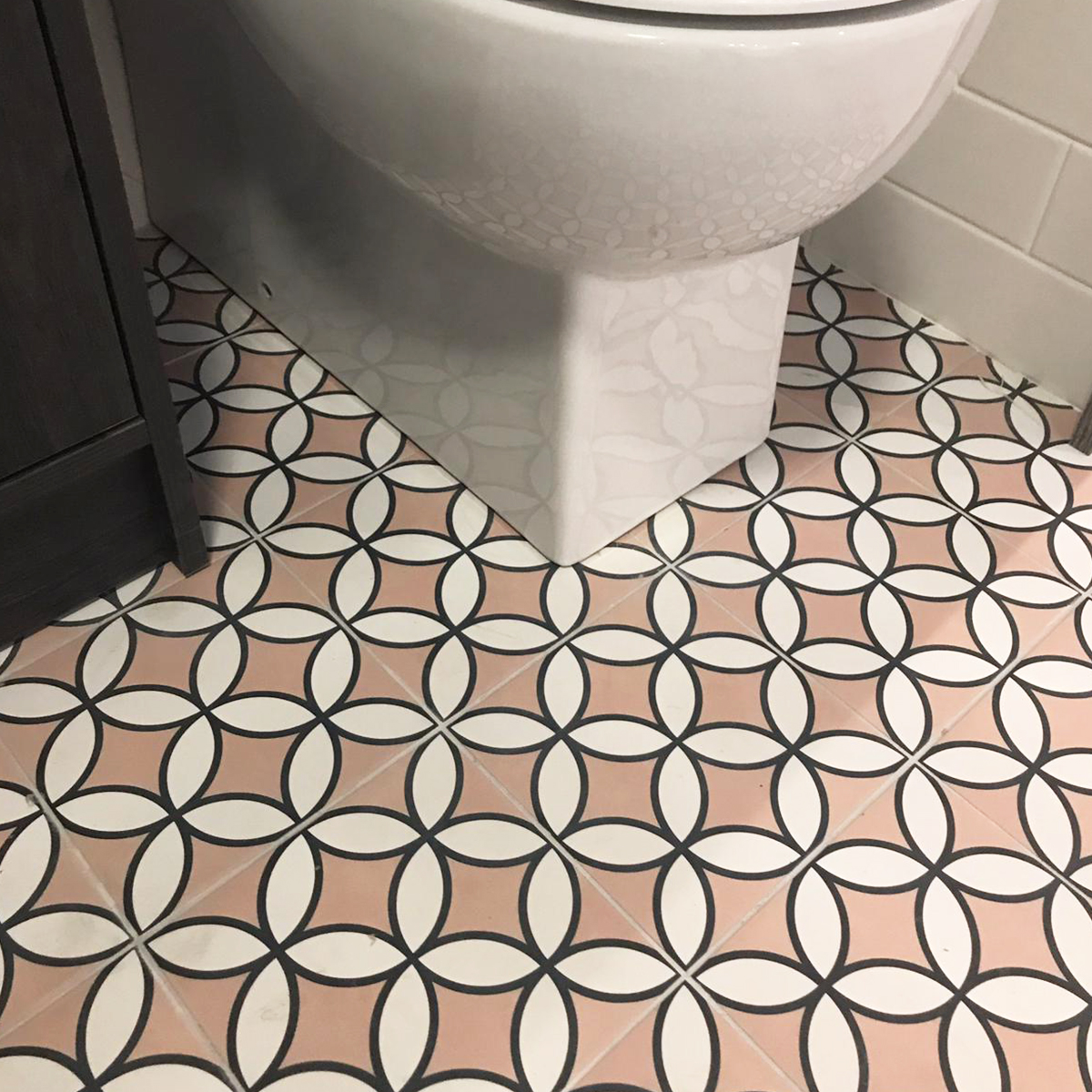
Tiles will require cutting to fit around bathroom furniture such as toilets and basins.
Techniques for different tile cutters
If you’re using a tile scribe then all you need to do is score the tile by placing your ruler along it to mark out the line, then use the tile scribe to break the tile by placing it underneath the tile and pushing downwards.
If using a flatbed tile cutter, then place the tile onto the cutter for support and align it with the cutter to score the tile, before using the snapper feature of the cutter to break the tile along the score line.
For cutting thicker tiles like porcelain, an electric tile cutter is usually best. These are also useful for making L-shaped cuts, although because they’re a bit pricier than other cutters, a simple tile saw will also do the job if you want a cheaper alternative.
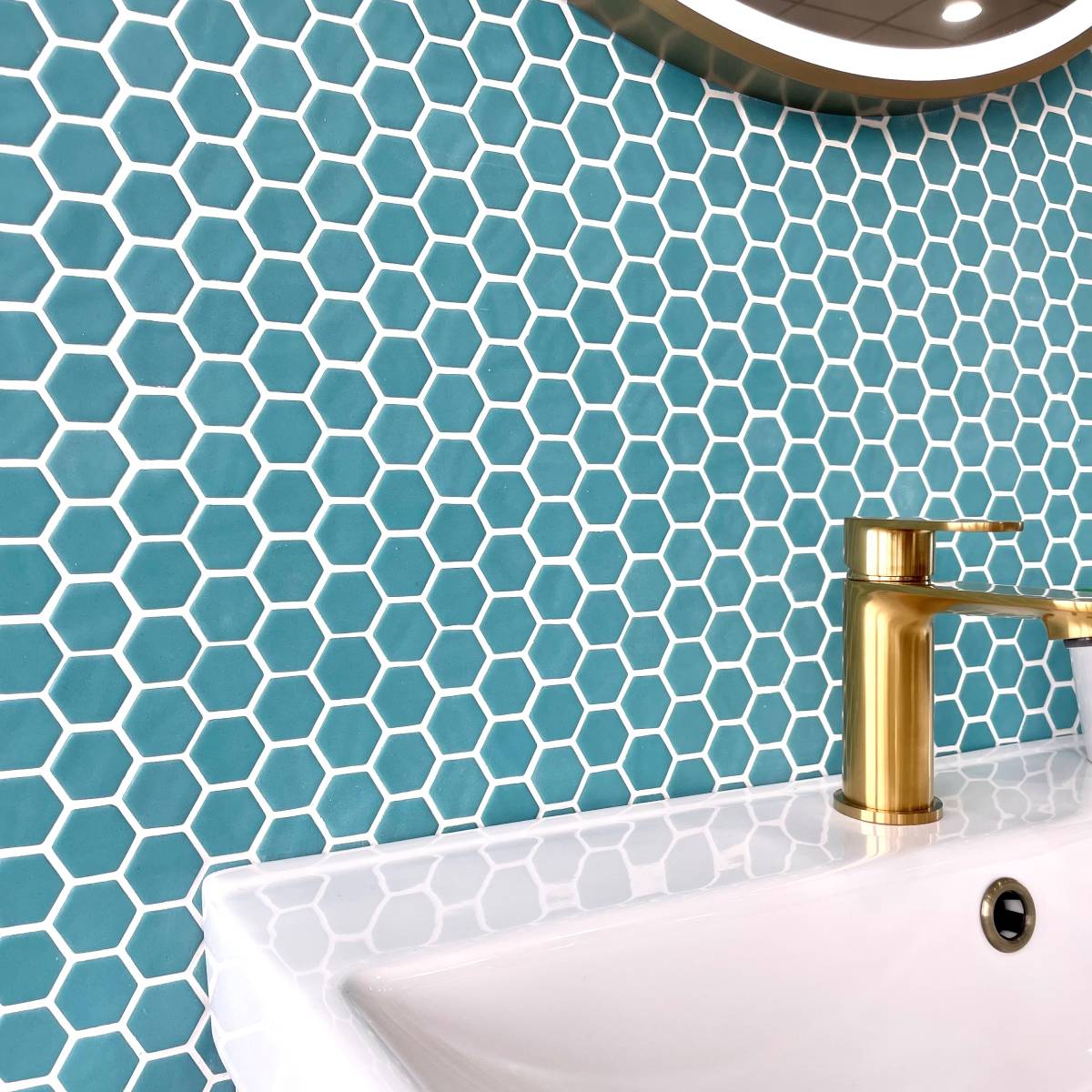
The Penny Natureglass Turquoise Matt Non-slip Mosaic Sheet in Blue Glass.
Whichever method you use, if you’re considering cutting tiles for your home design project, then the key thing to remember is to have all the necessary equipment to hand before you start. Dry cutting is best for indoor projects, while wet tile cutting is best for those trickier projects and for tiles which are thicker and/or a little more delicate.
However, it is possible to cut tiles without electric cutters, although it’s best to have a bit of practice first, if you’re new to tiling DIY.
At Bathshack, we supply a wide range of high-quality tiles, which you can find out more about here. Whether you’re tiling a kitchen, bathroom or anywhere else in your home, you can choose from tiles including large format designs and smaller styles, along with patterned, coloured, gloss and matt options.
With wood and marble-effect tiles also available, as well as mosaic, hexagonal and various other shapes, you’ll find something to suit any taste – and tiles to match all sorts of décor. We also supply all tile tools and accessories, including tile spacers, grouting and adhesives.
For more information about tile cutting – or to find out more about our tile range – email our team at info@bathshack.com or give us a call on (028) 9077 0188. Alternatively, why not call into your nearest showroom and we’ll be happy to help.
